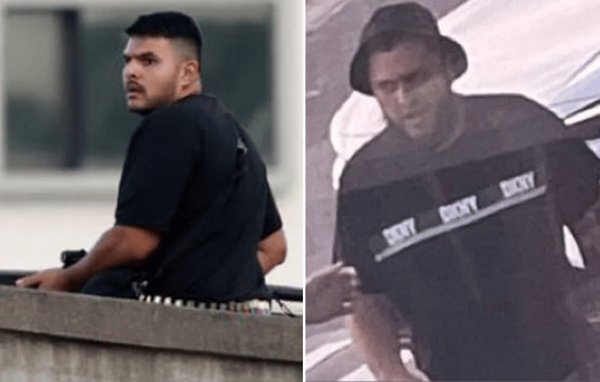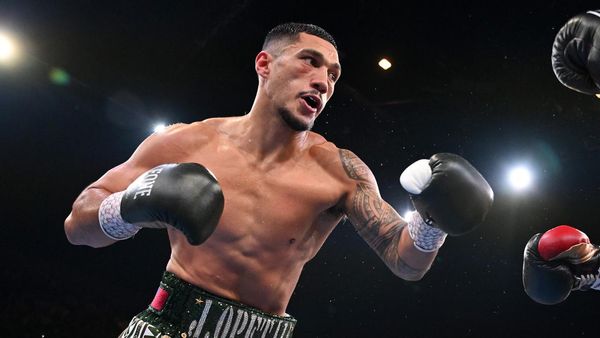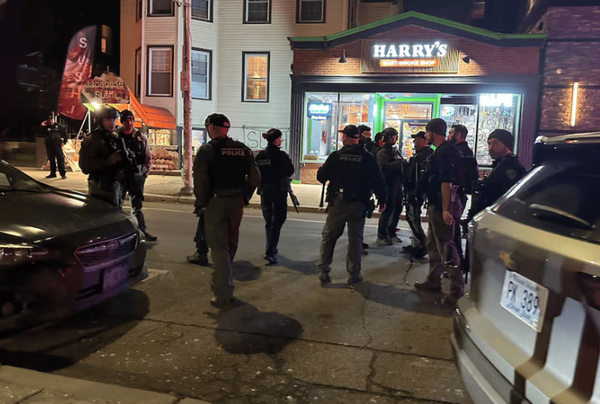
Damian Barr: ‘There were thousands of us and it rained. But we felt like millions. We felt like sunshine’
I lost my Pride virginity the same day Scotland did: Saturday 17 June 1995. The sun shone proudly as we marched loudly through Edinburgh, a city that generally limits shows of emotion to a vigorous twitch of a net curtain. I was 18, weeks from 19, and didn’t know where to look first.
Finally, I was legal: the age of consent had just been cut from 21. The fear of being arrested for doing what all my straight pals had been getting away with was very real. That summer, a guy I danced with at Bennett’s in Glasgow was reported by his boyfriend’s parents and jailed. Homosexuality was only decriminalised in Scotland in 1981 – more than a decade after England. And Section 28 was still very much on the books, as a teacher told me after I worked up the courage to ask for help. So, I flinched when I saw all the police at the march assembly point by the Blue Moon Cafe on Broughton Street. The uniforms were there to stop trouble – we all knew how quickly it could turn. But still.
I couldn’t believe the crowds; I didn’t know there were this many of us in the world, never mind Scotland. There were men holding hands and kissing IN PUBLIC. I blushed and longed to be that brave. Ranks of lesbians banged drums in time, rattling the windows in the Georgian townhouses all around. There were people whose gender I couldn’t work out. There, and then, we were all different together. I was among strangers yet among friends and might even find a boyfriend, maybe at the afterparty in the Meadows. Of course, I couldn’t find most of my actual friends: some things never change.

Huge handmade banners shouted about Aids, which hit Edinburgh especially hard. I don’t remember what I wore that day, but I know I had my red ribbon on. We all did. We were marching for the people we had lost. We were marching with ghosts. There were a few rainbows but far more pink triangles – I was just discovering this history, not taught at school, of how my ancestors were rounded up by the Nazis, along with the Jews and Roma and all the others they destroyed. Never forget, I was learning.
I was studying journalism at Napier University (I was the first in my family to go to uni and the first to come out, that I knew of). I considered interviewing the people marching with me, but who would run such a story? Who would read it?
I don’t remember floats and there were no corporate sponsors, no invitation to slay your mortgage with Barclays. We set off around noon, led by the drummers, and braced as we left the gaybourhood. No crowds lined Princes Street. Some shoppers stopped to stare. A busload of tourists mistook the men in kilts carrying a Pride Scotia banner for nationalists and took photos – they didn’t clock that the kilts were leather. We crossed George IV Bridge and headed to the Meadows where I finally found my pals. It was all over by 9pm. But I was changed for ever. And so was Scotland, which continues making up for lost time.
Official records of that first Pride say there were only thousands of us there that day and grainy photos show it rained, lots. But we felt like millions. We felt like sunshine.

Ella Braidwood: ‘Where I lived, gay was used as an insult and lesbians were fetishised’
I remember feeling nervous, as 200 of us arranged ourselves behind a big Pride banner in front of Carlisle’s city council offices. It was 2019 and I had gone back home to march in Cumbria Pride, two school friends in tow. It was the antithesis to the big city parades. There was no need to sign up to the march beforehand – anyone could join in – and barely any corporate sponsors. There were certainly no floats laden with drag queens or waving celebrities; waterproof jackets and hiking boots were the order of the day, rather than leather and sequins. But it was never about the glittery grandeur: it was the 10th anniversary of Cumbria Pride.
I couldn’t have imagined that day, as a closeted teenager. I grew up in a village just outside of Carlisle, and knew I was a lesbian around the age of 14. I felt a huge amount of shame because, where I lived, gay was used as an insult and lesbians were fetishised or discussed as the butt of jokes. My friends were supportive when I came out, but “that’s so gay” was still a phrase I heard a lot throughout school. I found it incredibly isolating – until I learned to drive, I couldn’t really get anywhere on my own, except for a few daily buses to Carlisle. Some people describe their secondary school years as the best of their life. Well, they were the worst of mine.
I was brought up as a Christian and went to church most Sundays, and that fuelled my sense of shame. I feared what my congregation would think of me. I knew that my mum especially would find it hard to accept my sexuality, at least initially. I don’t want to go into detail about my coming out to her, other than to say this: that moment broke both of us. I think homophobia damages all of us, just in different ways and to varying degrees. Now, she often tells me that she is proud of me, but actually I am so proud of her and how she changed to embrace me.

All of which is why I wanted to be visible for the LGBTQ+ kids living in Cumbria. The parade route was pretty short, around a mile long, through the city centre and up to Carlisle Castle. Without much in the way of a sound system, the marching music consisted of bagpipes and Newcastle’s all-women drumming group, the Bangshees. The National Trust was one of the few big brands on the march.
There were no barriers along the route, so, when I saw my family, I jumped out of the parade to hug them. A family friend took a photo: I’m smiling with mum by my side, wrapped in a rainbow flag she gave me that morning, both encased by my dad and older brother. (I also have a younger brother, who wasn’t able to come, but has always been very supportive.)
For me, the day was about progress, and reclaiming the place where I’d grown up with the people I loved. I moved to London for university in 2012, a few days after coming out to my family. I hadn’t really looked back – apart from the holidays, I avoided going home. It just reminded me of how sad I’d been there. I wanted to let go of that painful awkwardness, still lingering, from things said in the past. I think I did far more for young LGBTQ+ people in Carlisle that day than I’d ever done at the Prides I’d been to in London and Brighton. As a child, I didn’t see people like me.
But things have changed. In the castle grounds after the march, there were families with young kids, covering themselves with glitter and face paint. It was wonderfully grassroots, with a marquee, a stall selling Cumberland sausages, and a play area with hula-hoops. Among the advertisers on the big screen were a local chip shop and pole-dancing group.
I love going home now. That Pride march helped me move on from the past, the people I grew up with rallying behind me. Last year, I got that photo of me with my family framed and hung it on the living room wall. It always makes me happy when I look at it. It’s one of my favourite memories.

Yas Necati: ‘I had wanted to perform drag for a while, but something was holding me back’
I spent the weeks leading up to Pride month ordering tiny water guns off eBay, hoping one of them would fit. It was preparation for my first ever performance other than poetry: a drag act taking on one of Turkey’s biggest pop stars, Tarkan. I was to take the stage at a new club night, a small alternative community Pride event at The Glory (east London’s notorious queer bar and performance space) called Turkish Delight. The scene was set: I had watched hours of Tarkan videos from the 90s and 00s, the soundtrack was mixed, the choreography was sorted, and I had what I thought was a great idea: to pull a water gun out of my pants mid-performance and squirt the audience.
I was a few weeks into rehearsal: practising in my living room with bananas or pencils or whatever I could get my hands on, really. When I ordered the first small water pistol off eBay, I didn’t anticipate that it wouldn’t be watertight, instead producing a steady drip down my trousers. I looked like I had wet myself.
I tried using other water pistols to no avail. I attempted filling the water guns with thicker liquids. But soon there was just fairy liquid, melted chocolate or whipped cream soaking through my jeans, chafing my thighs. This was not the comical-but-sexy striptease I had in mind.
On the night of the show, I was buzzing. It was so cool to be performing to an audience who had also grown up with Tarkan’s music. Tarkan himself is a very confident, cocky, beautiful and effeminate man and I felt like his energy had taken over my body when I was in front of that audience. I started off in a jean jacket with a postman’s hat and fingerless gloves – a nod to an early Tarkan video Kimdi? – and by the end I wasn’t wearing very much at all.
People were singing along to his music at the top of their voices, and I was giving everything I had. When I came off stage, I fell into the arms of my sister, my friends and my then-partner – I felt so at peace. The water pistol idea had flopped (I kept the gun, but without the water), but that wasn’t what the act had been about: it was about celebrating queerness, transness and Turkishness, but it was also about me.
I had never had a space before where I could celebrate all of the intersections of my identity like that. Mainstream Pride events in the UK had never felt like they were for me. But here I was at an alternative Pride event, run by a lesbian couple from Istanbul, Tuna Erdem and Seda Ergul, and although I identify as Cypriot, not Turkish, I felt embraced and at home.
I had been wanting to perform drag for a while, but something was holding me back: I was worried predominantly that white audiences wouldn’t get the act I envisioned. But performing to people who knew Tarkan and his own complex relationship with his sexual orientation felt so liberating. Doing drag has helped me celebrate all the parts of myself, and feel pride both on and off the stage.
Last month, on a walk with my sister, she said: “Yas, I have an idea for a drag act!” I won’t go into too much detail here (so as not to reveal it ahead of her debut!), but the act is also very Cypriot. At the start of Pride month, she shared a picture of herself with her first painted-on beard, and gushed about her pride in being a lesbian and how excited she is to do drag.
Six years later, I’m so excited my sister can develop something like this with a hope that it might find a place on the London drag king circuit. Doing drag has helped me celebrate all the parts of myself, and I hope it can do this for her, too.







